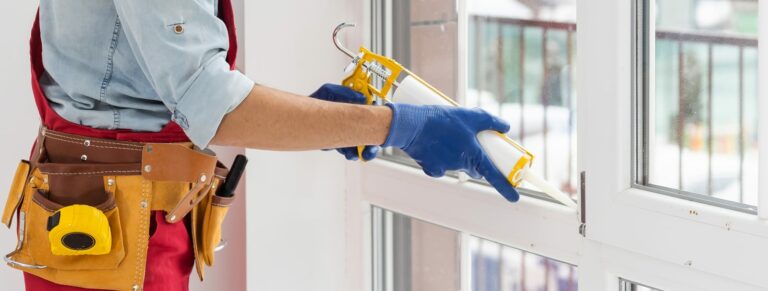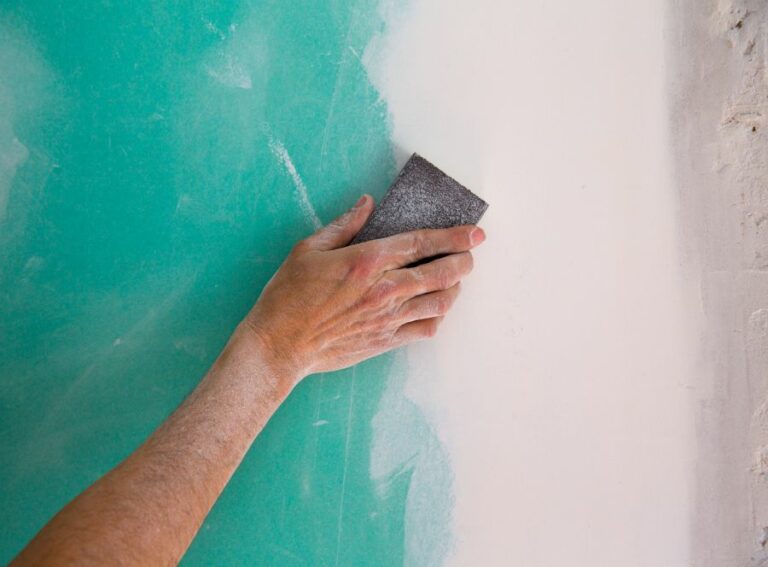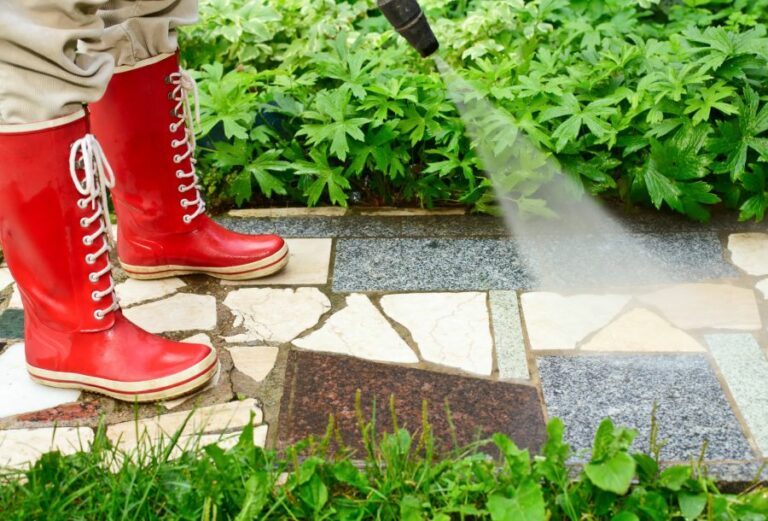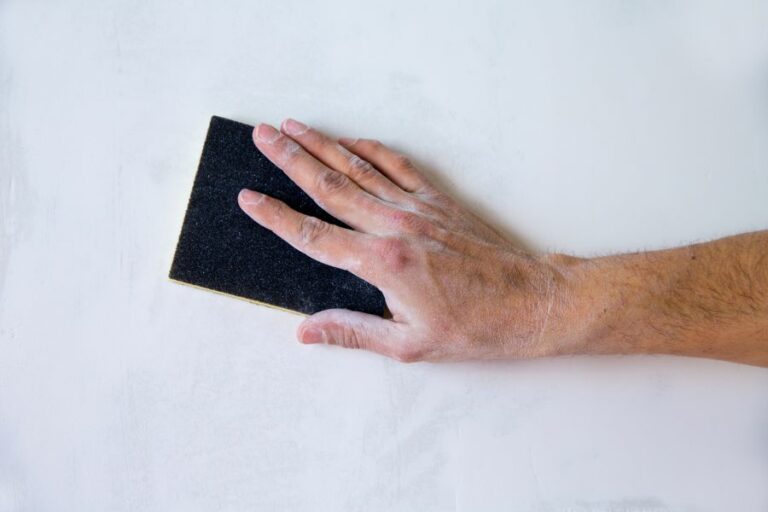Powerful Exterior Surface Washing, What Pros Say
Are you tired of looking at your home or office building covered in dirt and grime? Worried that it might be causing damage or just plain unsightly? Fear not, for we have the ultimate solution for powerful exterior surface washing that will make your space shine like new. With our years of experience and top-of-the-line equipment, you can trust us to help transform your property.
Powerful exterior surface washing:
Powerful exterior surface washing involves using pressure washing and soft washing techniques to remove dirt, algae, and mold from various surfaces, such as concrete, brick, wood, and vinyl. This cleaning method not only improves aesthetics but also prolongs the life of the property’s exterior and contributes to a healthier environment. To achieve optimal results, choose the appropriate washing method, use eco-friendly cleaning solutions, observe safety precautions, and hire professionals when necessary.

Discover the secrets to powerful exterior surface washing that can transform your home’s appearance! Keep reading to unveil the best techniques, equipment, and tips to ensure a spotless and fresh look for your outdoor surfaces. Don’t miss out on these game-changing methods!
Contents
- 1 Effective Outdoor Surface Cleaning Solutions
- 2 Discover the Strongest Power Washing Techniques
- 3 Ensuring Safe House Exterior Pressure Washing
- 4 Top-rated Products for Impeccable Outdoor Cleaning
- 5 The Ultimate Guide to Power Washing Your Home Exterior
Effective Outdoor Surface Cleaning Solutions
• Introduction to Exterior Surface Washing
Exterior surface washing is an essential part of maintaining a clean and visually appealing property. Whether it’s your home, office, or commercial building, regular exterior washing ensures that your property makes a positive impression on everyone who sees it.
• Understanding Pressure Washing and Soft Washing
– Pressure Washing
Pressure washing is a popular exterior washing method that utilizes high-pressure water to remove dirt, algae, mold, and other contaminants from various surfaces. These surfaces can include:
- Concrete and brick paving
- Driveways and walkways
- Decks and patios
- Fences and walls
Pressure washing can be highly effective and efficient in cleaning surfaces, provided that it’s done correctly. It is important to properly adjust the pressure to avoid harming the material being cleaned.
Expert recommendation: Always use the appropriate nozzle and pressure setting for the surface you’re cleaning to avoid damage.
– Soft Washing
Soft washing is a cleaning method that uses a lower pressure than pressure washing, which makes it suitable for delicate surfaces such as:
- Gutters and soffits
- Roofs (especially those made of asphalt shingles, clay tiles, or wooden shingles)
- Vinyl or wood siding
- Windows and glass surfaces
Soft washing relies on a combination of cleaning solutions, careful technique, and lower pressure to effectively remove dirt, algae, mold, and other contaminants without damaging the surface.
Expert recommendation: Use eco-friendly cleaning solutions that are safe for the specific type of surface you’re dealing with, ensuring that the cleaning process is efficient and non-destructive.
• Benefits of Exterior Surface Washing
– Improved Aesthetics
A clean, well-maintained exterior creates a positive impression and adds to the visual appeal of any property. Regular washing can help maintain the appearance of your property, enhancing its value and attractiveness.
– Surface Protection
Exterior surfaces are exposed to various elements, such as rain, wind, dirt, and ultraviolet (UV) rays, which can cause discoloration, staining, and even structural damage.
Regular surface washing helps remove contaminants and prevents the growth of mold, algae, and mildew, therefore prolonging the life of your property’s exterior.
– Health and Environmental Benefits
Removing dirt, mold, and algae from your property’s exterior not only improves its visual appeal but also contributes to a healthier environment.
Mold and mildew can cause allergies and respiratory problems, while algae and other pollutants can contaminate nearby water sources. Regular washing ensures a cleaner, healthier ecosystem around your property.
• Expert Tips for a Successful Exterior Surface Washing
– Choose the Appropriate Washing Method
It is important to choose the correct washing method based on the surface you’re cleaning. Pressure washing is ideal for more durable surfaces like concrete, while soft washing is necessary for delicate materials like wood or vinyl.
Make sure to familiarize yourself with your property’s exterior materials and choose the most suitable cleaning technique accordingly.
– Use the Correct Cleaning Solutions
Using the right cleaning solutions is critical for effective and safe washing. Make sure to choose eco-friendly, biodegradable products that are specifically formulated for the type of surface you’re cleaning.
– Observe Safety Precautions
Safety is paramount when it comes to exterior surface washing. Make sure to wear appropriate protective gear, such as gloves, goggles, and non-slip footwear. Additionally, avoid directing the water pressure toward other people, animals, or delicate surfaces.
– Hire Professionals When Necessary
If you’re inexperienced in exterior surface washing or dealing with particularly stubborn stains and growths, consider hiring a professional cleaning service. Professionals have the right training, equipment, and knowledge to achieve the best results without damaging your property.
• In Conclusion
Powerful exterior surface washing is essential to maintaining a clean and visually appealing property.
By understanding the different cleaning methods available, choosing the right products, and following expert recommendations, you can achieve excellent results and effectively maintain the beauty and integrity of your property’s exterior.
Remember to prioritize safety and always consult a professional if you’re unsure about any aspect of the washing process.
Discover the Strongest Power Washing Techniques
Power washers, also known as pressure washers, are powerful cleaning tools that can effectively tackle dirt, grime, and other unwanted substances on various surfaces.
With a wide variety of power washers available in the market, one might wonder: “What is the most powerful power washer?”
• Understanding Pressure Washer Power: PSI and GPM
To determine the power of a power washer, we need to look at two key metrics: Pounds per Square Inch (PSI) and Gallons per Minute (GPM).
PSI refers to the pressure at which the water is released from the nozzle, while GPM is the measurement of the water flow rate.
A higher combination of these two factors equates to a more powerful power washer, as it has the capability to remove dirt and grime quickly and effectively.
– Gas vs. Electric Power Washers: Find Your Perfect Match
Power washers fall into two main categories, gas-powered and electric-powered. Gas power washers typically yield higher PSI and GPM levels, making them generally more powerful than their electric counterparts.
However, electric power washers can still efficiently handle smaller to medium-sized cleaning tasks while providing benefits such as lighter weight, quieter operations, and lower maintenance requirements.
Gas-Powered Power Washers: High-Performance Picks
For the most powerful gas-powered options available, consider the following models:
- Simpson Cleaning MSH3125 MegaShot: With 3,200 PSI and 2.5 GPM, this power washer offers strong performance for residential cleaning tasks. Its Honda GC190 engine promises longevity and reliability, making it a popular choice among experts for its powerful cleaning abilities.
- Generac 6565 Gas Powered Pressure Washer: Boasting 4,200 PSI and 4 GPM, this power washer is designed for commercial-grade cleaning jobs. Its robust 420cc Generac OHV engine provides efficient performance and superior durability, perfect for tackling large-scale and heavy-duty cleaning projects.
Electric-Powered Power Washers: The Best for Light to Medium Cleaning Tasks
While gas power washers lead in power, electric models can still deliver impressive performance. Some of the most powerful electric power washers include:
- Sun Joe SPX3000: With 2,030 PSI and 1.76 GPM, the Sun Joe SPX3000 is highly recommended for home use, as it offers reliable performance for a range of cleaning tasks. Its Total Stop System (TSS) ensures energy and water usage is optimized, resulting in cost savings and eco-friendliness.
- Karcher K5 Premium Electric Power Pressure Washer: Featuring 2,000 PSI and 1.4 GPM, this versatile power washer can handle light to medium tasks with ease. Its patented water-cooled induction motor increases the life of the unit by up to 5 times, ensuring durability and long-lasting performance.
• Additional Considerations: Hose Length, Attachments, and Maintenance
Aside from PSI and GPM, there are several other factors to consider when choosing the most powerful power washer for your needs.
- Hose Length: Selecting a power washer with an appropriate hose length will provide greater flexibility and reach during cleaning projects. Generally, a longer hose is better, but if you only require a power washer for small tasks, a shorter hose can suffice.
- Attachments and Add-ons: Power washers are compatible with a range of attachments and accessories, such as surface cleaners, foam cannons, and extension wands. These can be incredibly helpful in increasing the versatility and efficiency of your power washer.
- Maintenance Requirements: Gas-powered power washers demand more maintenance than electric models, so it’s essential to factor this into your decision. Regularly check and replace parts, such as the air filter, spark plugs, and oil, to keep your power washer functioning optimally.
• Expert Recommendations: Invest in the Right Power Washer for Your Needs
To find the most powerful power washer for your needs, it is crucial to assess your specific cleaning requirements and preferences.
Consider investing in a high-performance gas power washer with a high PSI and GPM for heavy-duty cleaning tasks or large-scale projects.
However, suppose you require a power washer for occasional home use. In that case, an electric model with moderate PSI and GPM levels can offer satisfactory performance without the added weight, noise, and maintenance of a gas model.
For more information on selecting the perfect power washer, consult trusted resources such as Consumer Reports or Pressure Washers Direct. These sites offer expert reviews, comparisons, and buying guides to assist you in your journey to find the most powerful power washer for your cleaning needs.
Ensuring Safe House Exterior Pressure Washing
• What is Power Washing?
Power washing, also known as pressure washing, uses high-pressure water jets to clean surfaces. This cleaning method is extremely effective in removing dirt, stains, mold, and grime from various surfaces, particularly the exterior of a house.
However, many homeowners often ask if it is safe to power wash their houses without causing any damage.
• Potential Risks Associated with Power Washing
– Damage to Siding and Paint
One of the primary concerns for homeowners regarding power washing is the potential damage it can cause to their homes’ exterior siding and paint. When done incorrectly or with too much pressure, power washing can strip away paint, damage vinyl siding, and cause cracks or other structural damage.
– Water Intrusion
Another concern when power washing a house is the risk of water intrusion. The forceful spray can force water into the walls through small cracks or gaps, leading to potential mold growth and structural damage.
This is particularly concerning in homes with wood siding, as water intrusion can lead to rot and deterioration.
– Damage to Landscaping and Outdoor Fixtures
Power washing the exterior of a house also poses risks to surrounding landscaping and outdoor fixtures, such as lighting or decorations. The high-pressure water can uproot plants, strip away mulch, and damage other outdoor elements if not carefully directed away from them.
• Proper Technique and Equipment for Safe Power Washing
– Use the Correct Pressure
The key to safely power washing a house is using the correct pressure. Many power washers have adjustable pressure settings, normally measured in pounds per square inch (PSI).
Typically, 1,200 to 2,000 PSI is recommended for cleaning most exterior surfaces, though some materials like stucco or brick may require a slightly higher PSI. Always refer to the manufacturer’s recommendations for your specific home siding and power washer.
– Choose the Right Nozzle
Power washers come with a variety of nozzle options, each designed for specific applications. A wider spray angle is generally the safest option for cleaning a house exterior. Using a nozzle that sprays at an angle of 25 to 40 degrees will provide a wider spray pattern, reducing the risk of damage.
– Maintain a Safe Distance
When power washing your house, it is important to maintain a safe distance between the nozzle and the surface being cleaned.
The closer you hold the nozzle to the surface, the greater the force of the water and the potential for damage. Start at a distance of at least 6 to 8 feet and adjust as necessary, always erring on the side of caution.
– Utilize Proper Technique
Using proper technique when power washing a home is crucial to ensure that you do not cause any damage to the structure. Work in a pattern from top to bottom, ensuring that water is not forced upwards under the siding or into any cracks or gaps.
Additionally, avoid prolonged spraying in one area, which can lead to paint peeling or other damage.
• Additional Safety Tips and Considerations
– Wear Appropriate Protective Gear
Power washing can create splatters and flying debris, so it’s essential to wear proper protective gear. At a minimum, this should include safety glasses, gloves, and closed-toe shoes.
– Test a Small Area First
Before you begin power washing your entire house, test a small, inconspicuous area to ensure that you are using the proper pressure and technique. This will allow you to gauge the effectiveness and safety of your power washing method before tackling the entire project.
– Avoid Power Washing Certain Materials
Some materials can be damaged even with proper power washing techniques. For example, if your home has an asphalt roof, power washing should be avoided entirely. The high pressure can cause the granules to be stripped away, accelerating the aging of the roof.
Always check the manufacturer’s instructions and recommendations for any surfaces you plan to power wash.
– Consider Hiring Professionals
If you are unsure about the proper technique or equipment to safely power wash your home, consider hiring professional cleaners to handle the job. They have the knowledge, experience, and equipment necessary to effectively and safely clean your home’s exterior.
• Conclusion
Power washing can be a highly effective method for cleaning your home’s exterior, but it is essential to use proper techniques and equipment to prevent damage.
By following the tips and recommendations provided in this article, you can safely and effectively utilize power washing to maintain a clean, attractive appearance for your home.
For additional information on safely maintaining your home’s exterior, consult resources from reputable organizations such as the International Association of Certified Home Inspectors.
Top-rated Products for Impeccable Outdoor Cleaning
A well-maintained and clean exterior of your house not only enhances the overall appearance but also prevents any potential issues related to mold, mildew, and other infestations. Choosing the right product to clean your house’s exterior is crucial for obtaining desired results.
• Pressure Washer: The Ultimate Cleaning Tool
A pressure washer is an efficient and versatile tool for cleaning various exterior surfaces. It uses high-pressure water spray to remove grime, dirt, mold, and other contaminants from the surface.
There are numerous types of pressure washers available, both gas-powered and electric, that offer different pressure levels and accessories to suit your specific requirements.
– Recommended Pressure Washers
Two pressure washer brands stand out for their exceptional performance and reliability:
- Sun Joe SPX3000: Known for its durability and efficiency, this electric-powered pressure washer provides consistent results without the noise and pollution of gas-powered washers.
- Simpson MegaShot MSH3125: A gas-powered pressure washer with a Honda engine, it offers more power and mobility for heavy-duty cleaning tasks.
• Detergents & Cleaners: The Essential Add-Ons
Selecting the right cleaning agent is essential for optimal results. Homeowners should consider using eco-friendly products, as they have less or no harmful effects on the environment and plants around your home.
It’s crucial to select a cleaner specifically designed for the exterior surface you are working on, such as siding, brick, or stucco.
– Siding Cleaners
For cleaning siding, whether it be vinyl, wood, or aluminum, opt for cleaners like Simple Green Oxy Solve House and Siding Cleaner and Krud Kutter House Wash. These products are environmentally friendly and can be used with a pressure washer for better results.
– Brick & Masonry Cleaners
When cleaning brick and masonry surfaces, use products like Saver Systems Defy Safer Masonry Cleaner or Prosoco Sure Klean, which are specifically designed to remove dirt, grime, and mildew without damaging the surface.
– Stucco Cleaners
For stucco surfaces, consider using EcoClean Solutions Mold, Mildew & Algae Remover or Wet & Forget Moss, Mold, Mildew, & Algae Stain Remover. These products are specifically designed to remove stubborn stains and protect the surface from damage.
• Safety Equipment: A Must-Have for the Cleaning Process
When cleaning your house’s exterior, it’s essential to use proper safety gear, such as gloves, goggles, and a mask. This protects you from any potential hazards related to chemicals or high-pressure water spray.
• Expert Tips for Effective Cleaning
I recommend following these tips for optimum results and a safer cleaning experience:
- Always read and follow the directions provided by both the pressure washer manufacturer and the cleaning agent manufacturer.
- Rinse the surface with water before applying any cleaner, as this will help in loosening the grime for easier removal.
- Adjust the pressure settings of the washer according to the surface being cleaned. Lower pressure is recommended for delicate surfaces, while higher pressure is necessary for tough stains and grime.
- Start at the top and work your way down to avoid streaking and ensure thorough cleaning.
- After applying the cleaner, let it sit for a few minutes before rinsing it with water, allowing the detergent time to work effectively.
In conclusion, choosing the best product to clean the exterior of your house depends on the specific surface you are cleaning and your individual needs.
Opting for a pressure washer, along with eco-friendly and surface-specific cleaning agents, can ensure that your house’s exterior is thoroughly clean and well-maintained without causing harm to the environment. Don’t forget to use proper safety gear and follow expert tips for the best results.
The Ultimate Guide to Power Washing Your Home Exterior
Power washing can be an extremely effective method of cleaning your home’s exterior, removing everything from dirt and grime to mildew and mold.
However, to ensure the best results, it’s crucial to be equipped with the proper knowledge and techniques necessary to power wash your home safely and efficiently.
• Choosing the Right Equipment
Before getting started, it’s important to choose the appropriate power washer for the job. There are several factors to consider when selecting equipment, such as:
– Gas vs. Electric Power Washers
Gas-powered washers typically have more power and higher pressure capabilities, making them suitable for larger projects or tougher cleaning surfaces. However, electric models are quieter, more environmentally friendly, and easier to maintain.
Based on your needs and preferences, both options can be suitable for residential use.
– Pressure Ratings
Power washers are rated based on the pounds per square inch (PSI) of water pressure they deliver. Higher PSI ratings indicate a more powerful machine.
For residential purposes, a pressure washer that offers approximately 2,000 to 2,800 PSI is ideal. Higher-pressure machines may damage your home’s exterior.
– Nozzles and Attachments
Different power-washing tasks might require various nozzles or attachments. Narrow nozzle openings produce higher pressure streams (zero-degree nozzles being the most concentrated).
In contrast, wider openings distribute water over a wider area (forty-degree nozzles being the broadest spray pattern). Additionally, you might consider using specialized attachments such as surface cleaners, brushes, and foaming cannons for specific tasks.
• Preparing the Area
Before power washing, take the time to prepare the area you’ll be cleaning. This entails:
- Clearing away any debris, furniture, and objects that could be in the way.
- Covering any delicate plants, landscaping features, or outdoor electrical outlets with plastic sheeting to shield them from the water.
- Closing and sealing all doors and windows to prevent water from entering the home.
- Inspecting the exterior for any cracks, gaps, or damage that could potentially be exacerbated by high-pressure water spray.
• Safely Operating the Power Washer
Safety should be your top priority when power washing your home’s exterior. Keep the following guidelines in mind:
- Always read and carefully follow the manufacturer’s instructions for your specific power washer model.
- Wear appropriate personal protective equipment, such as protective goggles, gloves, and closed-toe shoes.
- Ensure you have a solid, stable footing during power washing, maintain a safe distance from the surface, and avoid using ladders if possible.
• Power Washing Techniques
Apply these expert techniques when power washing your home’s exterior, ensuring optimal results:
– Start with the Right Pressure and Nozzle
Always begin power washing with a wider nozzle opening and a lower pressure setting. Test the make sure the water pressure won’t damage the exterior surface. Gradually adjust the pressure and nozzle setting to achieve the optimal cleaning power without causing harm.
– Clean from Top to Bottom
Start power washing from the highest point of your home’s exterior, working your way down toward the ground. This prevents dirty water and debris from running down clean areas.
– Use a Consistent Spray Distance and Angle
Keep the spray nozzle approximately 12 inches from the surface and at a 45-degree angle. Maintaining a consistent spray distance and angle helps ensure even cleaning and avoids potential damage to the surface.
– Employ a Two-Step Cleaning Process
To maximize cleaning effectiveness, apply a cleaning solution to the surface and let it soak for a brief period of time, then power wash the surface clean.
– Rinse Everything
After power washing, carefully rinse any residue or cleaning solution from the surface using a low-pressure setting or garden hose.
• Post-Cleaning Maintenance
Having successfully power washed your home’s exterior, it’s important to perform some post-cleaning maintenance.
This consists of inspecting your home’s exterior for any newly discovered damage, ensuring proper drainage, and allowing surfaces to dry completely before resealing or repainting as necessary.
In conclusion, power washing your home’s exterior can be an incredibly effective method for cleaning and maintaining its overall appearance.
By using the proper equipment, following safety guidelines, and employing expert techniques, you can achieve the best possible results and prolong the life of your home’s exterior.
Step | Description |
|---|---|
1 | Gather necessary equipment: power washer, hose, cleaning solution, nozzle attachments, and safety gear (gloves, goggles, etc.). |
2 | Inspect the exterior surface for areas that need repair or patching, and address those issues before power washing. |
3 | Set up the power washer according to the manufacturer’s instructions, and attach the appropriate nozzle for the job. |
4 | Apply a cleaning solution to the exterior surface with a low-pressure spray, working from the bottom up to prevent streaking. |
5 | Allow the cleaning solution to soak into the surface for the recommended amount of time to break down dirt and stains. |
6 | Begin power washing the surface by guiding the spray in a consistent, overlapping pattern, always holding the nozzle at an angle to avoid damage. |
7 | Work from the top down to prevent dirty water from running over cleaned areas, and keep the spray moving to avoid damage from focused pressure. |
8 | Rinse the exterior thoroughly to remove any remaining dirt and cleaning solution, ensuring a clean and streak-free surface. |
9 | Allow the surface to dry, and then make any necessary touch-ups or repairs. |







